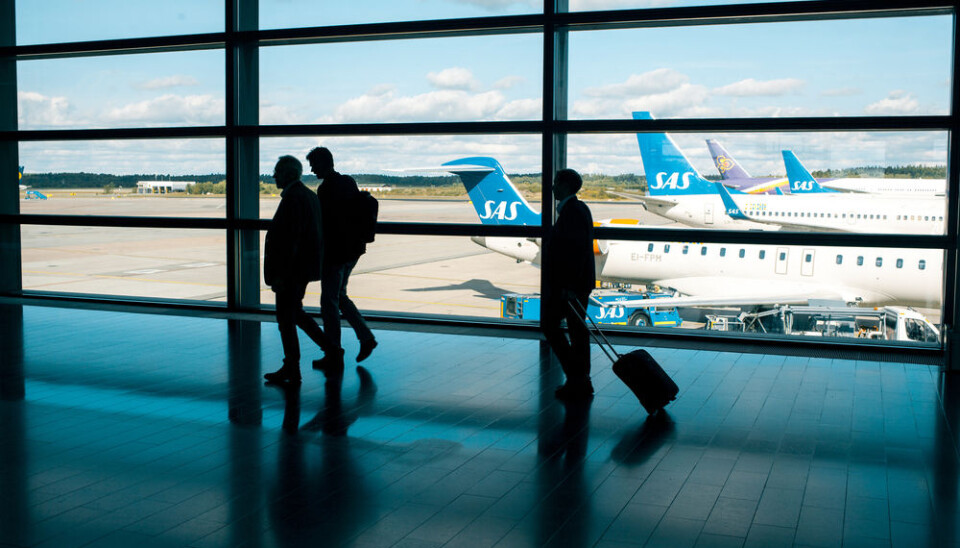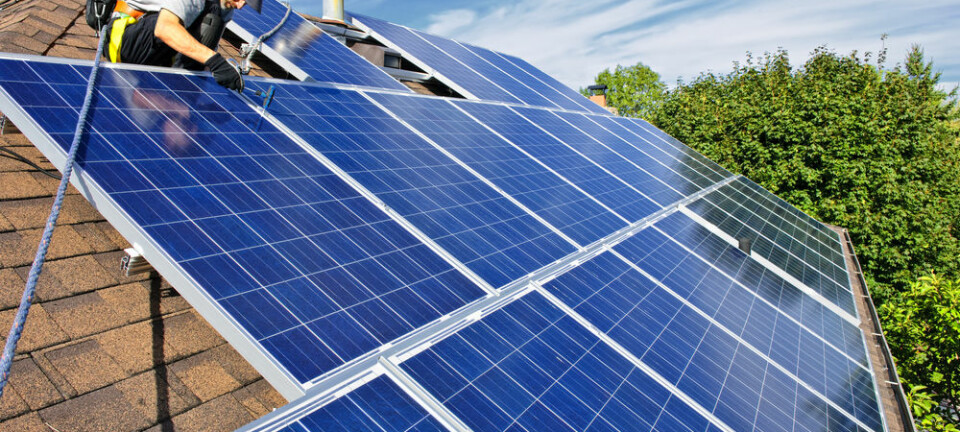
Grasping the nettle: Swedish tax to tackle aviation’s impact on climate
OPINION: The new aviation tax aims to change consumer behavior by taxing one of the fastest growing sources of greenhouse gas emissions in the world.
The recent adoption of the Swedish Aviation Tax shows that in face of unsatisfactory measures to address international aviation greenhouse gas emissions, individual countries can act through ambitious environmental taxation in pursuit of their climate and environmental objectives.
This is not the first time that a European country has attempted to introduce a tax on aviation for environmental purposes, nor would it be the first time that an aviation tax was repealed after being introduced.
Whether or not Sweden ultimately succeeds and reduces greenhouse gas emissions from aviation will depend on setting the right price for this new tax. Moreover, the fate of the entire scheme will be determined by the outcome of the next Swedish general election in September, as the major political opposition, Alliansen, has already stated their opposition to the tax.
What is the new tax exactly?
A few weeks before the Paris Agreement was adopted in 2015, the Swedish government commissioned a study to assess their options for introducing a tax to reduce the aviation industry’s climate impact. As a result, a new law was proposed and, ultimately, the Swedish Aviation Tax was adopted in November 2017 (Lag (2017:1200) om skatt på flygresor).
The tax is in essence a ticket tax and aims to prompt behavioral change in the demand for air transport, thus achieving the desired environmental objective: combating climate change.
From 1st April 2018, all large commercial passenger flights (exemptions are granted for aircraft with 10 or less seats) arriving at or departing from a Swedish airport will have to declare and pay a tax for their passengers. The exact rate is determined by the passenger’s final destination, where the law distinguishes three tariff zones ranging from 60 to 400 SEK per passenger per flight, which is about 7 to 45 USD.
The aviation industry, including the International Air Transport Association, did not cheer the adoption of the Swedish Aviation Tax. The tax has faced severe opposition for fears of job losses, reduced competitiveness, and limited environmental effectiveness. Some airlines have requested that the Swedish government withdraw the regulation.
Read More: Making climate taxes more acceptable
A large source of greenhouse gas emissions
Emissions from the aviation industry account for two per cent of global greenhouse gas emissions (over three per cent in the EU) and, crucially, they are forecasted to grow exponentially by an estimated 300 per cent by 2050 due to rising air travel demand.
Research shows that aviation’s total impact on the climate at least doubles when you consider factors other than greenhouse gases, such as different types of emissions, the formation of condensation trails, and the enhancement of cirrus clouds.
However, to date, emissions from aviation have remained largely unregulated.
Read More: What will our climate look like in 2050?
Not the first attempt at an eco-tax on aviation
That said, there have been some efforts to address aviation emissions. Notably, in 2008 aviation was included in the European Union Emissions Trading Scheme (Directive 2008/101/EC). This effectively put a price on carbon for the emissions of all flights arriving in and departing from the EU, including international aviation.
The measure faced political, commercial and legal challenges, so international flights were temporarily waived from compliance in the light of international developments. Soon thereafter, the International Civil Aviation Organization (ICAO) began negotiating a global measure for the sector.
In 2016, ICAO adopted a Carbon Offsetting and Reduction Scheme for International Aviation. The scheme requires airlines operating in the routes covered (exceptions are granted to certain states) to buy carbon offsets to compensate for their growth in CO2 emissions above 2020 levels. However, the scheme is still under development, and has been largely criticized for its lack of ambition in relation to the Paris Climate Agreement goals.
Read More: The machine that converts carbon dioxide to stone in Iceland
Aviation still under-taxed
Some European countries, including Austria, Italy, Norway, France, the UK, and Germany, have adopted aviation taxation. Other countries like Malta, Denmark, The Netherlands, and Ireland have introduced aviation taxes but have since removed them.
However, despite these measures, aviation is still a highly under-taxed sector, due to historical privileges and prohibitions rooted in the Convention on International Civil Aviation and air traffic agreements, such as fuel VAT taxation. It is also due to the intrinsic difficulties in establishing national taxation for international activities.
Therefore, it is unsurprising that individual climate ambitious countries would break out and introduce taxes for the aviation sector.
The Swedish Aviation Tax shares elements with some of the previously adopted so-called ticket taxes in Europe. Although the tax liability in the Swedish Aviation Tax is on the aircraft operator performing commercial flights, the de facto incidence might not be on them; the cost of the flight will increase and that cost, depending on market conditions, might be passed to the passenger. While this formula internalizes some of the social cost of flying and might reduce the demand for flying, the tax does not create the behavioral incentives for a given airline to emit less, which a tax based on the emissions released could achieve.
Read More: Terror and Trump have transformed Norwegian travel habits
How effective will the new tax be?
An eco-friendly aviation tax could encompass additional measures to incentivize the reduction of fuel consumption or to improve aviation energy efficiency in order to enhance environmental effectiveness.
Although the study that served as a basis for the initial proposal for the Swedish Aviation Tax did mention potential complementary measures, these measures have not been adopted. These include obligatory quotas for using biofuel in domestic flights, a tax on aviation fuel through bilateral agreements, a fly green fund, incentivizing airplanes’ energy efficiency, and making routes and landing strategies more fuel-effective.
However, the Swedish Aviation Tax is silent in this regard. Instead, the tax will aim to address the climate impact of aviation on the demand side alone.
The tax rate will raise the price of the flight ticket, in a similar fashion that other excise taxes on fuel or tickets do already. This, they hope, will prompt behavioral changes in the demand of air transport, and thus achieve the desired environmental objective. Therefore, environmental effectiveness here depends on setting the right price.
Regarding the use of tax revenue, the law proposal also mentioned the removal of an administrative fee previously paid by air carriers to the Swedish Transportation Board, which was used to finance the operation of the board. This change came into force on 1 April 2018 (simultaneously with the aviation tax).
The proposal suggests that the board should instead be financed entirely by tax revenue. The study states that the loss of revenue from the administrative fee (approximately 120 million SEK) is far exceeded by the expected increase in revenue from the aviation tax (up to 1.75-1.78 billion SEK), so on the balance, state financing will ultimately be positively impacted by the change. Thus, while not stating that the tax revenue stemming from the aviation tax will be specifically used to finance the transportation board, it is clear that the increase in revenue from the tax will compensate for the loss in revenue resulting from the removal of the fee.
Read More: Are we overdoing aviation security?
Can this work where others have failed?
Whether the Swedish Aviation Tax will be flying high or nosediving with the next Swedish government is, as of yet, unknown.
Nonetheless, the Swedish Aviation Tax exposes the fiscal potential and the climate relevance of one the fastest growing sources of greenhouse gas emissions in the world. This is a course of action that other countries or regions might pursue to combat aviation’s growing climate impact.
---------------
Read this article in Danish at ForskerZonen, part of Videnskab.dk










